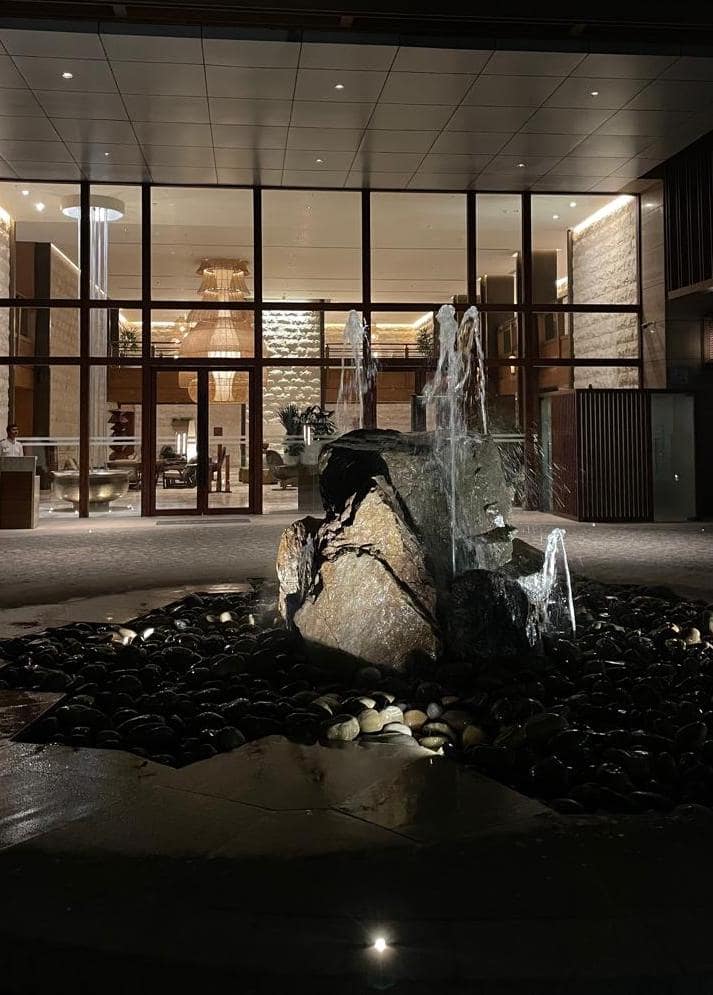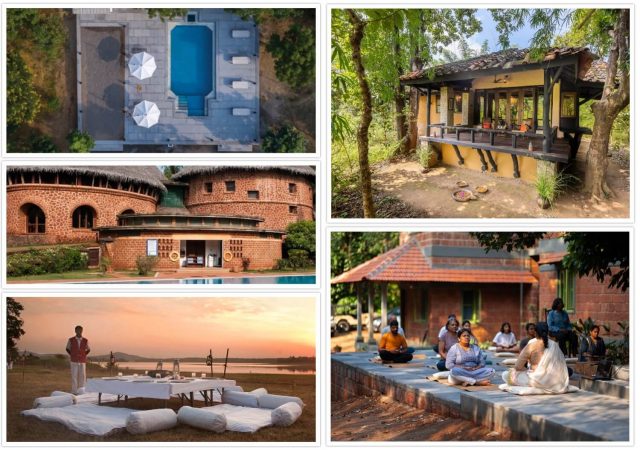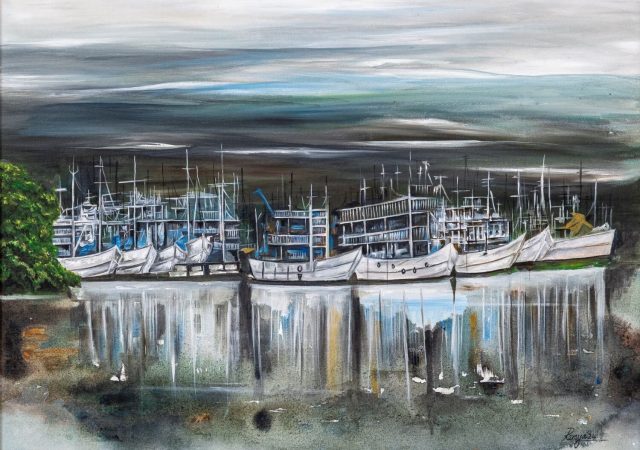Positioned high above the point where the Ganga branches into the Chandrabhaga, the property unspools across ridged topography with an almost ceremonial grace. Here, the built form doesn’t compete with the landscape—it yields to it. Nature leads, design listens.
The arrival experience is nothing short of lyrical. The lobby—expansive yet intimately attuned to its surroundings—welcomes with a restrained theatricality. Rooted in the design philosophy of biophilia—the innate human tendency to connect with nature—the lobby invites the outside in through expansive glass doors that pour in mountain light and dissolve boundaries between structure and slope. The overarching theme of the resort’s decor, Centered Around You, finds expression here through visual metaphors of balance and harmony. This ethos materializes in the form of repeating
concentric patterns—motifs that quietly echo throughout the interiors. A sculptural chandelier of concentric rings descends in gentle arcs, evoking the sacred geometry of mandalas. It anchors the volume without overwhelming it. A nearby water feature murmurs softly, grounding the space in serenity. The drama here is in the details; the opulence, in the restraint.
Throughout the resort, an aesthetic of elemental honesty prevails. Surfaces are intentionally tactile—Himalayan timber, handwoven jute, timeworn metal—each chosen not just for texture but for resonance. Even the transitions between spaces are contemplative: hushed corridors kissed by mountain light, semi-open courtyards that breathe with the altitude. Rooms are sanctuaries in themselves—pared-back, poetic, and profoundly sensory. Floor-to-ceiling windows frame shifting vistas of cloud-draped peaks and verdant slopes, with the river’s silvered ribbons unfurling in the distance.
At Akasa, the resort’s all-day dining venue, architecture yields again—to the view. Earth-toned interiors and natural textures draw the eye outward, where an infinity pool vanishes into the valley below. The interplay of elevation and expanse creates a sense of suspended stillness. Meals here are taken slowly, as if in deference to the panorama.
By contrast, Pebbles—the swim-up bar—is where the resort finds its edge. Literally carved into the hillside, the bar is moody, sculptural, elemental. Raw stone meets firelight. Low seating invites quiet conversation. And as night descends, Rishikesh glimmers in the valley below like a constellation fallen to earth.
But it is at the Heavenly Spa by Westin where the dialogue between design and divinity reaches its most transcendent expression. Tucked into a sheltered nook of the resort, the spa is anchored by a suspended silver banyan—equal parts sculpture and spirit symbol. Reflected in the still water below, it becomes a mandala of mirrored grace. Treatment rooms are private, cocooned, and reverently quiet—a place not for escape, but for remembering the self.
There is a slowness to The Westin Himalayas. A quiet intelligence. A sense that architecture, when truly attuned, can become an act of devotion. This is not designed for effect—but for embodiment. Not ornamentation, but offering. Not simply a resort, but a rare and resonant retreat.


















